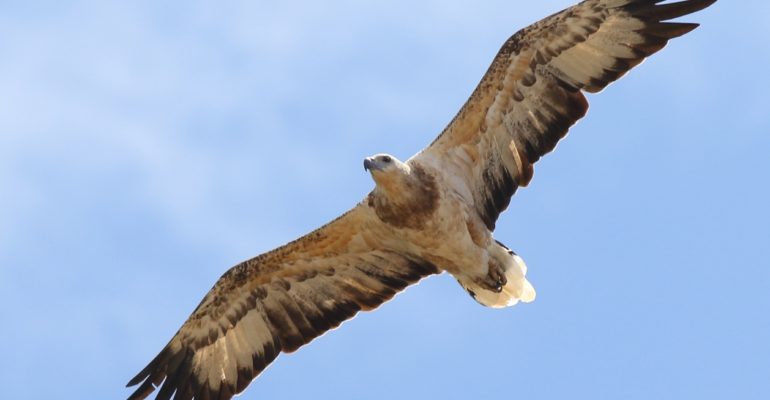
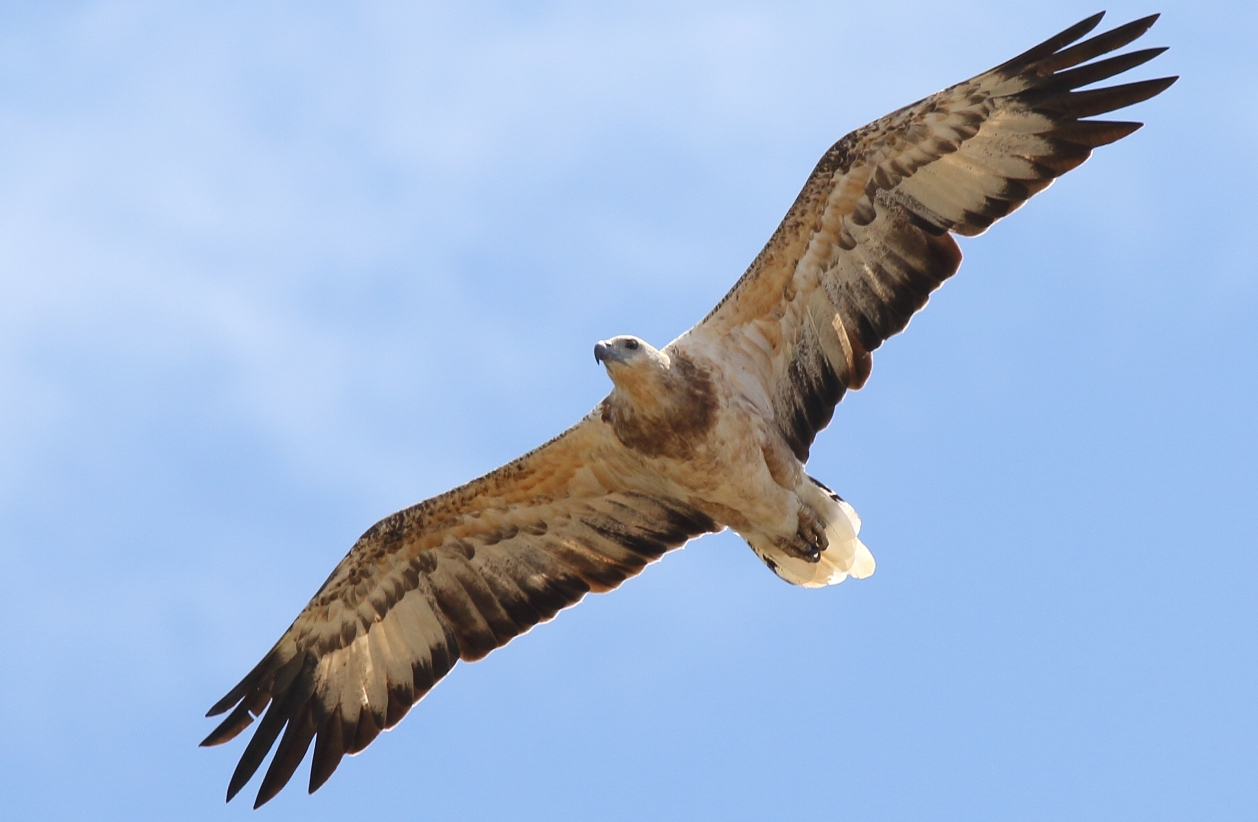
Young white-bellied sea-eagle patrolling the Cleveland shoreline
The so-called genteel pastime of birdwatching, or birding can also be…. big business. In fact in academia it has its own term: avitourism.
The benefits of avitourism is relatively familiar to Northern Hemisphere recreationists, especially USA, German and UK residents. There are thousands of tourists from the northern hemisphere travelling the world annually with the sole aim of seeing as many new birds as possible in all sorts of exotic locations. Australia has a high number of species found nowhere else (this is known as endemism).
Australian birding is slow to takeoff
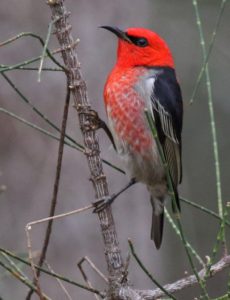
Scarlet honeyeaters visit Redlands in winter
The pastime of birding and subsequent avitourism activites have been slow to gain momentum and reach full potential among Australian punters. The reasons for this are complex and difficult to pin down, but suffice to say it may be the youthfulness of our nation in terms of white history or it maybe Australians are blasé about the number and the species variety of birds.
What is known is that birdwatching tourists tend to be well educated and many are relatively affluent. Those from overseas and visiting Australia are often highly motivated and well prepared.
Nonetheless, recent years have seen a growth in participation in birding in Australia. The interest might be due to a growing ‘grey nomad’ population and the benefit of social media and technological advancements.
Another factor might be the tough times being experienced by the Aussie dollar making a more appealing option for both domestic and international holiday planners. Essentially, it becomes too expensive for Aussies to travel overseas, and international tourists are enticed by better exchange rates. It may pain some sectors of the economy but a poor Aussie dollar does great things for our tourism industry.
Despite this, there are still opportunities for the economic benefits that flow from a vibrant birdwatching industry to be experienced among local communities and businesses.
Birdwatching Pays
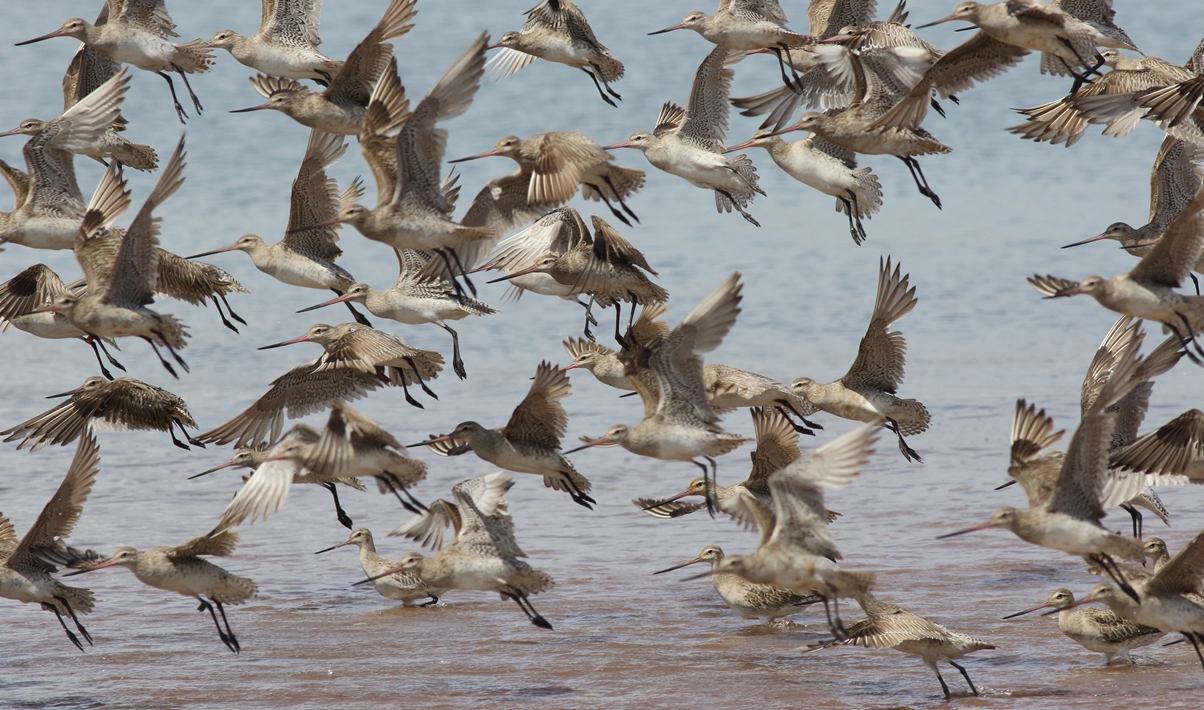
Bar-tailed godwits at Oyster Point in Cleveland are a spectacular attraction for birdwatchers – see them also on video
Research has found that birdwatching tourists are valuable to local economies, with trip expenditures (accommodation, food, guiding etc.) often exceeding those of general nature-based tourists. Some individual birdwatching sites in Britain and Europe generate anywhere between $US 170,000 –$US 3.5 Million per year. Estimates for a site in Mexico are as high as $US 8.7 Million per year.
Although these are overseas examples, this does demonstrate the potential contribution intact bird habitats can have for local economies as a result of bird-based tourism. For sites in Australia, this represents a huge economic opportunity that is currently under-developed and thus under-valued by key industry stakeholders and government agencies.
Birding in Moreton Bay
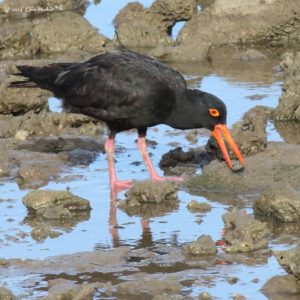
Rare sighting of a sooty oystercatcher in Moreton Bay
A prime example of an undervalued birdwatching opportunity is the mainland shorelines of Moreton Bay. “Home” to migratory shorebirds in the Austral summer.
These sites are key opportunities to engage domestic and international tourists alike so long as the marketing, infrastructure and general political support are present. A real threat to the birds is ignorance, lack of awareness, with many people assuming that all wader birds and migratory birds share the same food or can share the same place.
In fact the feeding needs of these birds are much more complex and different feeding niches are filled by different species and many species are territorial (including some of the migratory birds that visit Moreton Bay).
If we compromise these areas for short term gain, we lose the ability for the avitourism industry to provide long term economic benefit to local communities in an environmentally passive manner.
Birding in Redland City
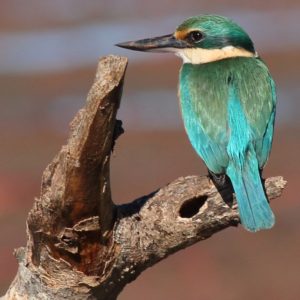
Sacred Kingfisher at Oyster Point Cleveland
The Redland Tourism Strategy and Action Plan, makes only one reference to birds, on page 42 in the SWOT analysis for tourism in the Redlands:
excellent opportunities for viewing wildlife (including marine mammals, fish, turtles, birdlife and marsupials)
Clearly, there is scope for a more thorough examination of avitourism as a contributor to a sustainable tourism industry in Redlands.
To learn more see Birdlife Southern Queensland convenor of the Queensland Ornithological Conference held recently on 9 -13 July 2016.
Rochelle Steven, PhD
BirdLife Southern Queensland
Photos by Chris Walker
Further reading:
The economic value of birdwatching
Birdwatching tourism in Australia
Please note: Offensive or off-topic comments will be deleted. If offended by any published comment please email thereporter@redlands2030.net
I hope you enjoy reading this short piece. More of my research can be found via
https://scholar.google.com.au/citations?user=Qqt0Nk8AAAAJ&hl=en&authuser=1
Happy birding! 🙂
Thanks for the extra research information Rochelle. I gather from the papers I could easily access that there are few studies specific to our area and situation but that it is not a good idea to dissect all our conservation areas with a multitude of tracks with hundreds of mountain bikes racing through every weekend. Fewer tracks with quieter uses surely would be less damaging.
Welcome to my suggestion to the Council oh about 19 years ago and again 5 years later.. And guess what ? it was knocked back… why ? the Koala Klan thought it would take attention from the Koalas.
My criticism then was as now that flag ships like specific ( symptomatic) species protection sink in public consciousness just as quickly. I favoured a marketing approach i.e. linking the environmental All species concern with the clear benefit to the public ( ownership of the need) but what do I know with a degree in marketing and ( mass)psychology and 35 years of doing that. All I can say is please protect me from inexperienced mum’s who think that al one needs is an emotional plea ( most often not shared with Mr And Ms average) their view is great for a one off fund raiser but not with long term cause celebre.
Then again we have the same fired up inexperienced Mayor and councillors who more interested in their own hot issues rather than an informed fact based assessments. One that accept that there is no such a thing as a solution that doesn’t have consequences.
My bet is that the mayor is still as naive about the science of the environment, the long term negative consequences as she was in her first public contribution at a meeting to assess a development next to Indigiscapes. I will never get over her comment that she could see a deadly bacteria in a dam as justification to the development. In truth the bacteria she referred to was anaerobic ( and microscopic and lived under the detritus at the bottom of the dam full of turgid muddy water ). Recent development confirm that she has learned the politics well but well is still basically ignorant ( in denial) about the science.
I would ask the councillors who support another marina what defences do they have in mind against The undeniable more hostile climate that is in evidence and will get worse.
Yes it will be someone else’s problem to solve but so much for their concern about the Redlands and it’s on going residents.
Common sense if not also the very clear science indicate that bird watching properly done would indeed be a potential Big money earner for the Redlands. Proper hides in protected land i.e. fenced off and maintained could be set up strategically around the the Redlands entrance controlled and a fee for maintenance could be levied. Like it is in other countries and particularly in Asia. I can think of at least 10 through out the Redlands including straddie and at least one bay island. and well 9 or so close to population . NB did any one see the Catalyst program of bush sounds ? Think of the spin offs there are lots of opportunities for organized walks , Bird watch , and animal watching and even involvement in research projects.
I can remember some years back offering for a fee to join in on bird capturing , banding weighing monitoring of wild birds as a means to fund the equipment for an academic’s paper on bird movements. We actually had to limit the numbers involved and run several days due to demand. ( think digging for dinosaurs up north west) . There’s a market. Likewise we helped doctoral studies on bats and yep frogs. Again they sold out quickly and had to be redone several times. I went on a number of them and I thought I was pretty well informed but my children and I had a great time and learned heaps. The bats were cute.
Sadly I doubt that this mayor would be interested because it wouldn’t involve development and her business supporters couldn’t make 10, 100 of $millions profit.
Finally all this involvement reinforced in the casual attendees of the essential linkages in the environment and our long term survival give the increasing hostility of the climate.
Eprapah is a wonderful site for bird watching and there was even an old bird hide close to an abandandoned well close to one of the walking trails that provided many a successful photograph. At Mungara, the small museum within the grounds has for purchase a publication called The Birds of Eprapah. As well as the ground nesting curlews there was a nesting site of an osprey, various migratory species eg. Drongos, Dollarbirds, Koels as well as various local species of treecreepers, cuckoos and wrens.
Yes, Eprapah is one of the few places where bushland birds can be seen without the disturbance of noisy miners which have moved into the suburbs effectively excluding the smaller birds. I recently saw a white-bellied sea eagle nest in Eprapah, However, I thought the scout association was no longer welcoming visitors to the property because of safety concerns. Another worry is the number of mountain bikes being encouraged into our conservation reserves such as Bayview Reserve. Many of the shyer birds will have nowhere to go.
That would be a shame, Lynn, I must admit I havent visited for some time but when i was volunteering there one of the things I enjoyed was all of the little birds that were so rare to see elsewhere.
Lyn,
I could take you in breeding season sites where I know Sea Eagles, Brahminy Kites, and Whistling Kites all nest regularly.
In fact one year We saw a hybrid of the two kites.
I know where black kites, Dollar birds, wood ducks, Tawny Frogmouths, Boobook owls, Superb Blue wrens, assorted robins, and that tiny bird that has 6 different extremely loud calls( particularly given it’s size, and Nankeen Kestrals [sic] all breed. But the man who owns ( well his children) the property wants to sell it to developers. He’s even cut down a tree that had been an an osprey’s nest tree … for a view? of very dubious value.